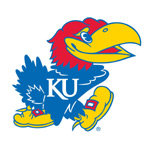What People Are Saying: About the Gender Achievement Gap
As a follow-up to my previous post about the Black male/Black female gender gap at Cornell university, I decided to educate myself a little bit more on past and present concensus on this issue, its causes and its solutions.
Here’s are a few of the opinions that — whether I agreed with the substance of the argument or not — I certainly found most intriguing:
…at all eight Ivy League institutions today, black women outnumber black men…The black gender gap is smallest at Cornell…The growing presence of black women on the campuses of the Ivy League institutions has far-reachign implications for black men as a whole. If black women are increasingly winning places at the nation’s most selective undergraduate colleges, it is reasonable to assume that these women will be selected for the nation’s top graduate schools and recruited as well for the top jobs int he corporate sector. Nationwide, black women who are college graduates already have median earnings greater than those of white women college graduates, whereas educationally qualified black men are still far behind white men.
— “The African-American Gender Gap in Ivy League Enrollments,” Journal of Blacks in Higher Education, Summer 1995
…among well-educated, professional black women — a group that is growing rapidly — the [gender] gap is a chasm. Surely, that progress for black women is good news that shouldn’t be overlooked. However, as black women advance, black men a falling even further behind…In fact, the most successful a black woman becomes, the more likely she will end up alone, Walter Farrell, a University of North Carolina professor, said in a March 2002 Washington Monthly article. As a result, professional black women are having fewer children, ,eamomg that a growing percentage of black children are being born into less educated, less affluent families.
— Salim Muwakkil, “The Gender Gap in the African-American Community,” on the Modern Tribalist blog, June 16, 2005
[African American graduate student] Chris Catching says that African-American men are being left behind.
A doctoral student in education at Rutgers University, he doesn’t think higher education knows what to do with black men. So he wants to show them. He’s studying his fellow students and learning why they are staying in school.
“So much of the research focuses on the pathological,” Catching said. Instead, they should find out what works, he added.
…
Catching, the Rutgers doctoral student, said African-American men who succeed in college share many characteristics. In particular, he said, they all had several mentors who have helped them.
“Some of the key things have been mentors at all levels of their life, mentors in their community, parental support and sensitivity on behalf of educators,” Catching said. “Those mentors help you get through those roadblocks.” He said mentors helped him graduate from Montclair State University in 1999.
— Paul H. Johnson, “The Growing Gender Gap,” in The Easterner, March 1, 2006
I led a research team in a five-year study of a nationally representative inner-city, predominantly black high school…
What we discovered surprised us.
Contrary to popular belief, these youth had very high self-esteem. Although it is a common myth that black youth are likely to have low self-esteem, studies in the last few decades have shown them to feel just as good, if not better, about themselves and as self-confident, in general, as white youth.
However, what we did find was that black boys, relative to black girls, thought themselves less capable academically and didn’t feel confident about their ability to read and write and do schoolwork. They scored lower on academic self-efficacy — what we might call academic self-esteem.
By contrast, the girls had more favorable attitudes toward the academic process. They also felt they had more social support — that people around them thought it was important that they graduate and expected them to graduate.
To complete each school year, the boys also needed to believe that school would pay off in the long run. The black boys seemed to be saying, “Show me the money.”
— Larry E. Davis, “A Gender Gap in Black and White: Explaining Why African-American Boys Lag in School — and Deciding What to Do About It,” in the Pittsburg Post-Gazette, July 29, 2003
Posted by Ajuan Mance
Posted in Achivement Gap, Black boys, Black men, Black Students, gender gap, Higher Education, Ivy League | Comments Off on What People Are Saying: About the Gender Achievement Gap




